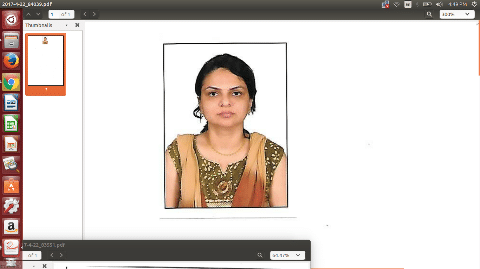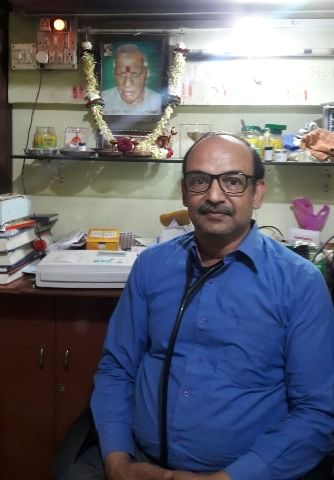Get the App
For Doctors
Login/Sign-up
About
Health Feed
Find Doctors
Health Packages
AllQ&AsTipsQuizzes
Pulmonary Embolism Health Feed
Last Updated: 8 years ago• Featured Tip
Share
Bookmark
Report
When blood clot blocks one or more arteries in your lungs the condition is known as pulmonary embolism. It can cause a decrease in the oxygen levels in your blood, damage to your lungs due to sudden restrictions in the flow of blood along with adverse effects on other parts of your body. Life threatening blockage can cause death if left untreated and you should immediately contact your health care provider to get proper diagnosis. Pulmonary embolism requires various lab tests and generally requi...more
Last Updated: 8 years ago• Featured Tip
Share
Bookmark
Report
When blood clot blocks one or more arteries in your lungs the condition is known as pulmonary embolism. It can cause a decrease in the oxygen levels in your blood, damage to your lungs due to sudden restrictions in the flow of blood along with adverse effects on other parts of your body. Life threatening blockage can cause death if left untreated and you should immediately contact your health care provider to get proper diagnosis. Pulmonary embolism requires various lab tests and generally requi...more
Last Updated: 8 years ago• Featured Tip
Share
Bookmark
Report
Clotting of blood during or after a pregnancy is fairly common these days. While the reasons for these are numerous, the driving reason behind this being that the mother is weak after such an ordeal and it is, therefore, likely to affect her health. In pregnant women, blood clots tend to form in the deep veins present in the legs or near the pelvic area. The condition is known as Deep Vein Thrombosis (DVT). One of the main concerns for people suffering from Deep Vein Thrombosis (DVT) is the occu...more
Last Updated: 8 years ago• Featured Tip
Share
Bookmark
Report
Clotting of blood is important for us in case of an injury or wound. It prevents the blood to ooze out of the body from any opening. Our blood releases cells called blood platelets, which initiate the process of clotting. However, the clotting of blood inside the veins is not a good thing to happen. This condition is called thrombosis. Moreover, clotting during pregnancy is a serious condition that poses threat to the health of both the mother and the child. In case of pregnant women, clotting o...more
Asked for male, 23 years old from Varanasi
Share
Bookmark
Report
Please Recovery from thrombo. Embolism is always slow Please continue your current medicine After full recovery. Reduce your weight by exercises and diet control Go for morning and evening walk daily Do yogasanas and pranayam daily Take salads and fruits more before lunch Avoid rice, oily food, non veg food, processed food.
Asked for male, 23 years old from Varanasi
Share
Bookmark
Report
Drink plenty of water, avoid dehydration and alcohal, eat healthy .green vegetables, less fat. Less oil. Less spices.
Asked for male, 27 years old from Varanasi
Share
Bookmark
Report
Health Query
Share
Bookmark
Report
Your mother has multiple problems. 1. Pulmonary embolism, for which she needs to take anticoagulants. There are substitute drugs available (if she is having problems with warfarin). These drugs are either in injectable form (low molecular weight heparin injections) or tablets (newer anticoagulants). The safety profile of these drugs is better than warfarin and the do not need strict monitering like warfarin does. 2. Backbone compression and pelvic bone cracks could be due to osteoporosis (weak b...more
Asked for male, 29 years old from Mumbai
Share
Bookmark
Report
Vaicose veins may get thrombosed but the possibility of a thrombus getting dislodged from the wall is far less as compared to deep vein thrombosis. As the doppler has not shown any evidence of dvt in deep veins of legs, the basic question remains, that wherfrom the thrombus got away to cause pulmonary embolism. Fortunately nothing untoward occurred but presuming it was from saphenious vein, precautions are essential. Avoid long immobilization of limbs, squeezing pressure on calves, very heavy ex...more
Asked for Female, 54 years old from Ahmedabad
Share
Bookmark
Report
Blood's ability to clot is measured by the time it takes to begin to clot ... called the prothrombin time. Because that varies with for example, humidity, when they test your blood, they compare it against a standard and produce a number called the INR (International Normalized Ratio)
If say normal blood takes 10 secs to begin to clot, and your blood takes 14 seconds, then the INR is 14/10 = 1.4 if it takes 20 secs, then the INR is 2.0. So normal blood must have an INR of 1.0 (1/1)
So, t...more
If say normal blood takes 10 secs to begin to clot, and your blood takes 14 seconds, then the INR is 14/10 = 1.4 if it takes 20 secs, then the INR is 2.0. So normal blood must have an INR of 1.0 (1/1)
So, t...more
684 people found this helpful
Book appointment with top doctors for Pulmonary Embolism treatment
View fees, clinic timings and reviews
Ask a free question
Get FREE multiple opinions from Doctors
posted anonymously

















